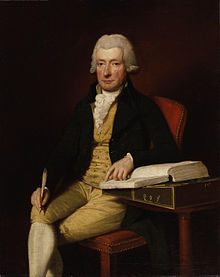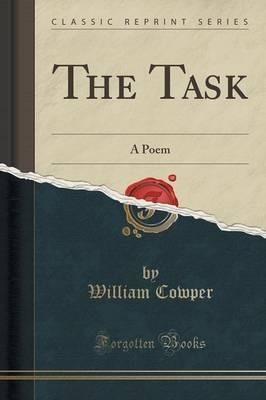Table of Contents
Who was William Cowper?
William Cowper (pronounced Cooper) was the leading poet of the generation between Alexander Pope and William Wordsworth. The fact that more than 100 editions of his poems were published in Britain and almost 50 in America during the years Robert Southey completed his book ‘The Life of William Cowper’, is a testament to his popularity.
Cowper’s fame owed much to the fact that his work stood out as a blend of religion and humanitarian ideas during a time that promoted traditional Christian sentiment.
One of the most famous poets of his time, he changed the direction of 18th-century nature poetry by writing of everyday life and scenes of the English countryside. Undoubtedly, he was one of the pioneers of Romantic poetry along with other variant styles such as satire and hymnody.

‘Behind a frowning providence, He hides a smiling face.’
Early Life of William Cowper
Born on 7 November 1737 in Berkhamsted, Hertfordshire to John Cowper who was a rector of the Church of St Peter. His mother, Ann née Donne, died of childbirth and her demise stayed with young William for years to come. His maternal uncle Robert and his wife Harriot who helped raise him, introduced him to the world of books.
Cowper was first enrolled in Westminster School in April of 1742 after moving from school to school for many years. He was an enthusiastic scholar of Latin and was skilled at the interpretation and translation of Latin, which he put to use for the rest of his life. He faced bullying in his school life but made lifelong friends from Westminster. Growing up, he had a deep affection for Homer’s epics, the Iliad and the Odyssey.
Writing Style of William Cowper

William Cowper’s prose and poetry both exhibit elegance. He was most influenced by two books he’d read as a child: John Gay’s ’Fables’ and the ‘Calvinist Pilgrim’s Progress’ by John Bunyan. Cowper’s satirical writings follow the ideas of essayists like Jonathan Swift, Joseph Addison while religion-based writing reflects George Herbert and his ancestor John Donne.
He respected John Milton the most, and one can witness it in ‘The Task’ which has certain similarities with that of Milton’s epic ‘Paradise Lost’.
Cowper’s mental illness, and constant fear of divine wrath, turned into his underlying theme for all his works. His ’Olney Hymns’ describe states of conflict within oneself, vulnerability, and suffering from little hope for redemption. Even pieces such as ‘The Journey of John Gilpin’ that are meant to be funny, are touched with deep sadness and loneliness. Almost all of his work was a mirror for his tumultuous personal life.
Cowper’s poetry is distinguished in its newfound recognition and precise observation of wilderness and the countryside. In ’The Task’, his interest in nature merges with his religious concerns. The poem highlights the connection between one’s perspective on life and his spiritual worth.
He suggests that nature be looked at as a work of art as an observer and that finding joy in presence of nature is the key to spiritual growth. His poetry reflects his preference for life viewed from a window, as an observer.
Later Life of Cowper
In 1763, he went through a trying period of depression and insanity leading to suicidal thoughts. His first attack of insanity took place when he was offered a Clerkship of Journals at the House of Lords. The pressure of examination led to a mental breakdown leading to three suicide attempts and was sent to St. Albans for recovery. His poem beginning “Hatred and vengeance, my eternal portions” reflected his struggles after the attempt.
After recovery, he met a former clergyman named Morley Unwin and his wife and began living with them. Not long after, Morley passed away. Cowper continued to live in the Unwin home and became much attached to the widow Mary Unwin.
In 1773, Cowper experienced an attack of insanity, believing not only that he was meant to suffer in hell, but that God insisted that he kill himself. Under the care of Mary, he began to recover and eventually started to write poetry again. During this time, he wrote several satires even one of his name. These poems were collected and published in 1782 under the title ’Poems by William Cowper, of the Inner Temple, Esp.’
Mary Unwin died in 1796, plunging Cowper into misery yet again from which he never fully revived. Cowper suffered from dropsy later in 1800 and passed away.
Influence on literature
Cowper’s position as an exceptional figure that formed a bridge between the neoclassical artists and Romantics in English literature has motivated a compelling interest in his life and works. Several scholars debate his inclination and satirical way of writing makes him appear closer to the 18th century moralists than the Romantics while others state that his interest in everyday life and nature places him closer to the Romantics.
‘The Task’ was one such work of his that received most criticism but at the same time, inspired interest in him and his work leading to a wide readership. The connection between Cowper’s mental illness and certain facets of his work was often questioned while his letters won the admiration of several scholars.
Legacy of William Cowper
The religious and thoughtful devotion for nature became a fundamental doctrine of the Romantic movement in British poetry but that was not all he left behind.’ The Task’ was well-appreciated in poetry circles for its innovation in combining the idea of nature and the heart of humans.
His extraordinary use of blank verse as a way for the flow of consciousness made him the forebearer of an “interior” mode in which the poetry is a lasting result of the mind and the emotions. Poet William Cowper’s focus on introspection and confession, are also what make Cowper an important pioneer of Romanticism in England.